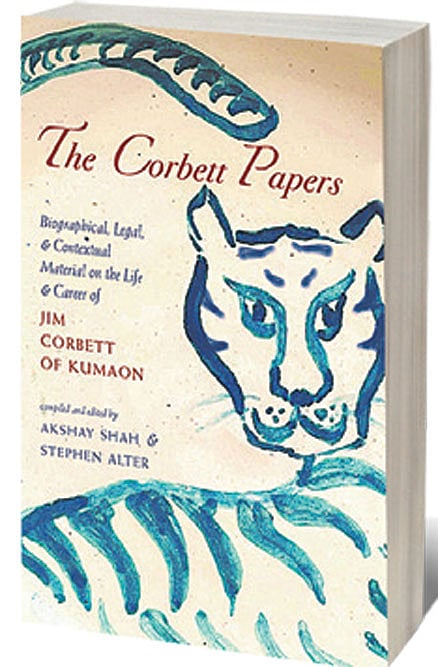The Hunter’s Nature

THIS BOOK IS a potpourri of Jim Corbett memorabilia comprising contributions from Corbett’s biographer, the late DC Kala of the Hindustan Times, his father, GR Kala, a British Raj era civil servant, Corbett’s sister, Maggie, his half-brother Charles Doyle, Corbett himself (including his last will and testament), and an afterword by the author Stephen Alter. The contributions are a part of the papers and documents inherited by Akshay Shah from his mentor DC Kala. For Corbett aficionados it would be a useful addition to the already extensive literature published about this somewhat enigmatic and legendary hunter-conservationist.
The first chapter of Kala’s Corbett biography, The Corbett Papers: Biographical, Legal, & Contextual Material on the Life & Career of Jim Corbett of Kumaon is reproduced in full, outlining Corbett’s life, his relationship with the local people, his success as a hunter, and then author and his devotion to the British Raj and royalty. Kala writes fluently, which makes for easy reading.
Corbett’s sister, Maggie was the person closest to Corbett and reminisces about her brother to her best friend Ruby Beyts, throwing light on the Corbett family of which he was one of nine siblings. She devoted her life to him and lived with him in Nainital, Kaladhungi and later Kenya. She recounts how Corbett, as a boy, would set off into the forests to hunt along with the family gardener and camp out for days, keeping tigers at bay at night by lighting fires.
Corbett’s half-brother, Charles Doyle, who became a doctor and settled in America, also became an author, though the extracts from his book The Taming of the Jungle, reproduced here are pretty appalling.
The best part of the book is Corbett’s contribution itself: his very first book, Jungle Stories just 104 pages long and privately printed one page at a time. Some of these stories made their way into the iconic, Man-Eaters of Kumaon. Among the stories here is his famous pursuit of the man-eating tiger of Chowgarh.
Corbett was probably every schoolboy’s (and hundreds of villagers’) hero, and on re-reading him after several decades, I was struck yet again by the man’s ability to tell a story and describe precisely a location where the action took place. His sense of geography and events is astounding: After many a birding trip I have taken down notes, and know how hard it is to recall accurately a place and situation. Corbett didn’t apparently make ‘field notes’ (as birders are exhorted to do!) but did write about his experiences to his sister Maggie, soon after they happened. He probably did refer to these letters while writing his books (in Kenya), but as Alter mentions in his Afterword, ‘The Hunter as Author’, Corbett himself traces this accuracy to the fact that he had taken an “interest in the scene, which is now indelibly etched in my memory.”
Also, I would suppose when you are pursuing a man-eater (who may be pursuing you) you will be acutely conscious of the geography of the area and remember exactly the position of every rock and tree in the vicinity.
Corbett has been described by his detractors as typically the great White hunter benignly coming to the rescue of the weak-kneed, trembling native, but he was revered and long remembered by the village folk of Kumaon. What is still a little difficult to reconcile (and which, has not been clarified), is how he, who described the tiger as “a large-hearted gentleman” could organise expansive shikars for the ruling British elite who happily gunned down scores of such “large-hearted (non-man-eating) gentlemen” for “sport”.
I wasn’t quite comfortable reading Corbett’s last will and testament either: it was like prying into someone’s personal diary; not a habit to be encouraged.
If you are a Corbett ‘collector’ this book is a must: better still go to Corbett National Park in Uttarakhand and see how it compares to what DC Kala wrote back in 1954.

